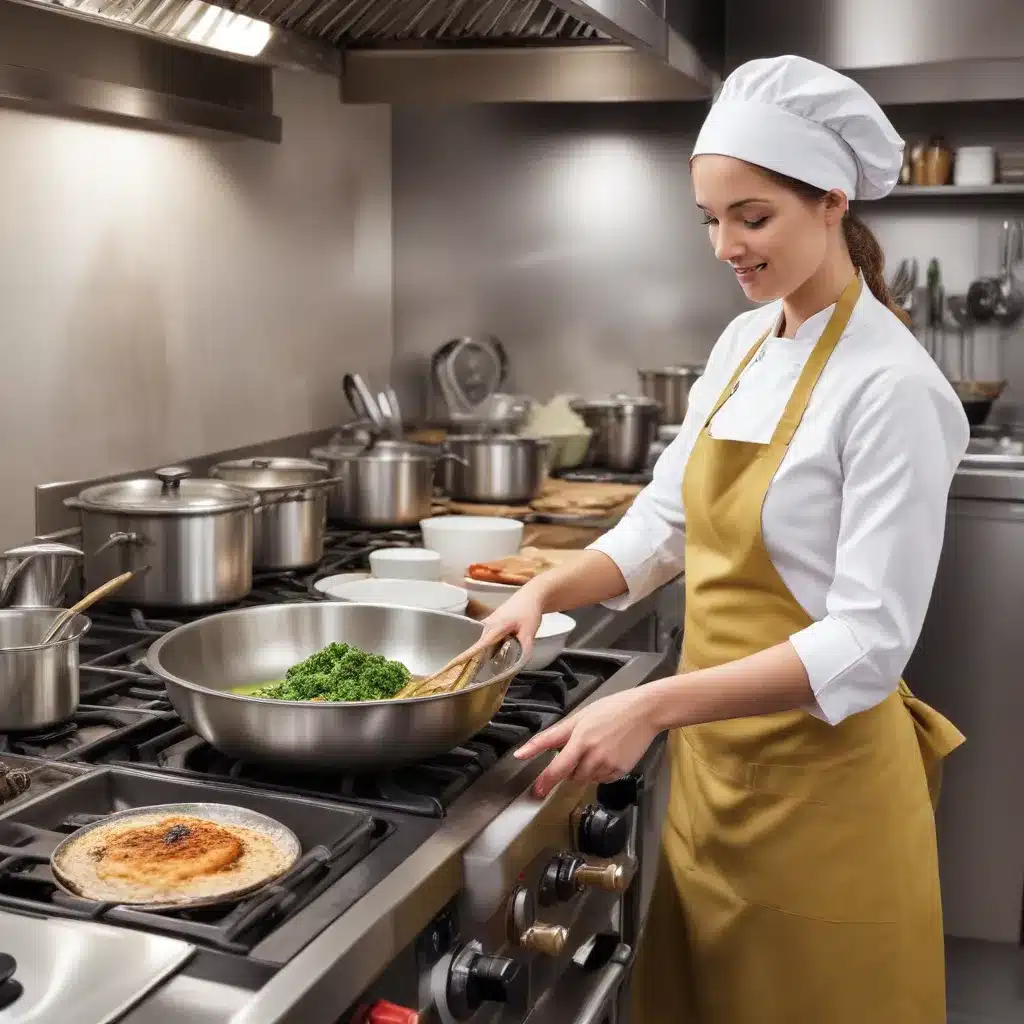
In the culinary world, maintaining a safe and hygienic cooking environment is not just a best practice – it’s an absolute necessity. As seasoned culinary professionals, we have a responsibility to ensure that the food we prepare is not only delicious but also free from any potential contaminants or safety hazards. In this comprehensive guide, we will delve into the essential steps and techniques that can help you create a kitchen sanctuary where food safety and hygiene reign supreme.
Cultivating a Culture of Cleanliness
Cleanliness is the foundation upon which a safe and hygienic cooking environment is built. As the old adage goes, “Cleanliness is next to godliness,” and this couldn’t be truer when it comes to the kitchen. According to the USDA, even with the stringent food safety measures in place at the governmental level, the consumer’s role is crucial in ensuring that food is handled safely after it is purchased.
To create a culture of cleanliness in your kitchen, make it a habit to clean and sanitize every surface and utensil that comes into contact with food. This includes countertops, cutting boards, knives, dishes, and even your own hands. Regularly wiping down appliances, mopping the floors, and maintaining a tidy work area can go a long way in preventing the spread of harmful bacteria.
Mastering the Four Pillars of Food Safety
The FDA and the USDA have identified four key steps to ensuring food safety in the home: clean, separate, cook, and chill. Let’s delve into each of these pillars in detail:
Clean
Maintaining proper hand hygiene is one of the most effective ways to prevent the spread of foodborne illnesses. Wash your hands thoroughly with soap and water for at least 20 seconds, especially after handling raw meats, using the restroom, or coughing/sneezing. Ensure that all surfaces, utensils, and equipment that come into contact with food are also cleaned and sanitized regularly.
Separate
Cross-contamination is a major culprit in foodborne illness outbreaks. Keep raw meats, poultry, and seafood separate from other food items, both during storage and preparation. Use separate cutting boards and knives for handling raw and cooked foods, and be sure to wash these items thoroughly between uses.
Cook
Ensuring that food is cooked to the proper internal temperature is crucial in killing any harmful bacteria present. Use a reliable food thermometer to check the doneness of meats, poultry, and other perishable items. Refer to the USDA’s recommended safe minimum internal temperatures for guidance.
Chill
Proper refrigeration and storage are essential in maintaining food safety. Promptly refrigerate or freeze perishable items, and be sure to check the expiration dates on all food items. When reheating leftovers, make sure they reach an internal temperature of 165°F (74°C) to kill any potential bacteria.
By consistently following these four pillars of food safety, you’ll be well on your way to creating a kitchen environment that prioritizes the health and well-being of both you and your guests.
Mastering Kitchen Safety Essentials
Maintaining a safe and hygienic cooking environment goes beyond just food safety. It also involves being mindful of potential physical hazards that can threaten the well-being of you and your kitchen staff. According to SafetyCulture, some of the key elements of kitchen safety include:
Proper Attire
Wearing the appropriate kitchen attire, such as non-slip shoes, aprons, and heat-resistant gloves, can help prevent injuries like burns, cuts, and slips.
Organized and Clutter-Free Workspace
A cluttered and disorganized kitchen can lead to tripping hazards and make it difficult to access essential tools and equipment. Maintain a clean and orderly work area to minimize the risk of accidents.
Safe Use of Kitchen Equipment
Carefully read and follow the instructions for all kitchen appliances and tools, and never use equipment you’re not fully familiar with. Pay extra attention when handling sharp knives, blenders, and other items with moving parts.
Effective Ventilation and Lighting
Proper ventilation helps remove airborne contaminants and maintain good air quality, while adequate lighting ensures you can clearly see what you’re working on, reducing the chances of accidents.
Proper Storage and Inventory Management
Storing food and cleaning supplies properly, and keeping a well-organized inventory, can help prevent cross-contamination and ensure the freshness of ingredients.
By integrating these kitchen safety best practices into your daily routine, you’ll be creating an environment that prioritizes the well-being of both your team and your customers.
Leveraging Technology for Enhanced Kitchen Safety
In today’s digital age, there are numerous technological solutions available to help streamline your kitchen safety and hygiene efforts. SafetyCulture offers a robust digital platform that can assist you in maintaining a comprehensive kitchen safety program.
With features like customizable checklists, real-time reporting, and the ability to conduct regular safety audits and inspections, SafetyCulture empowers you to proactively identify and address any potential hazards in your kitchen. This powerful tool can help you stay on top of essential tasks, such as temperature monitoring, equipment maintenance, and inventory management, ensuring that your kitchen operations run smoothly and safely.
Conclusion
Maintaining a safe and hygienic cooking environment is not just a lofty goal – it’s a fundamental responsibility for any culinary professional. By cultivating a culture of cleanliness, mastering the four pillars of food safety, and integrating essential kitchen safety practices, you can create a kitchen sanctuary that celebrates the art of cooking while prioritizing the health and well-being of your team and customers.
Remember, the kitchen is the heart of any culinary establishment, and by taking the necessary steps to ensure its safety and hygiene, you’ll be setting your business up for long-term success. So, let’s roll up our sleeves and get to work, because a safe and hygienic kitchen is the key to delivering an unforgettable dining experience.


